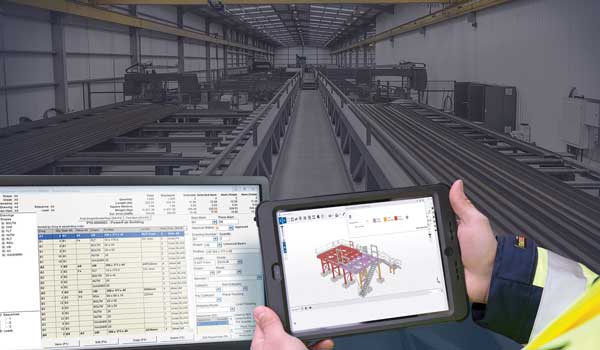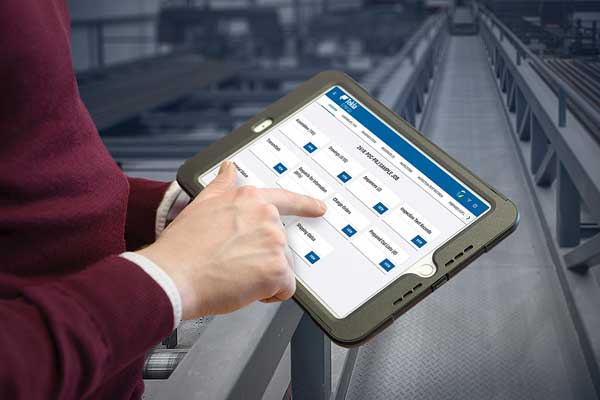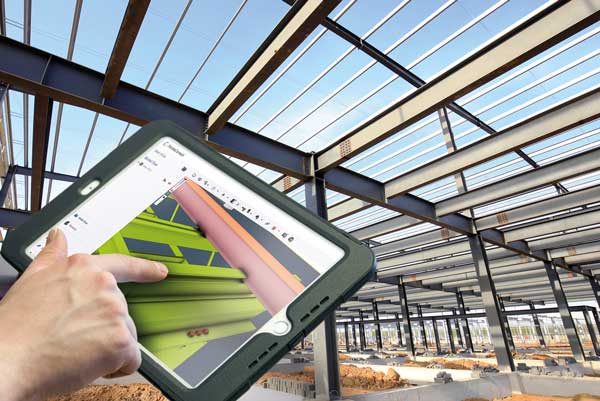Projects and Features
More power to fabricators
Tekla PowerFab is transforming the way fabrication works by empowering fabricators with full control of their production management.
When it comes to reducing the construction industry’s environmental impact, a lot of attention rightfully falls on the initial design and engineering stages of a project. However, this isn’t the only place where change is needed. Here, Chris Gatehouse, Detailing and Manufacture Specialist at Trimble, explores the role a management information system (MIS) can play in the journey to net-zero.
Smarter fabrication = greener construction
Employed correctly, a digital MIS can be used throughout the entire fabrication workflow, right from the initial estimating and procurement stages through to the shop floor and beyond. Likewise, its capacity and potential for carbon savings can also be felt throughout the same workflow.
Let us take the estimating and bidding stage, as an example. Here, the ability to make more informed and accurate estimates and bids not only helps to protect your all-important profit margin – critical during a time of material cost and availability volatility – but it can also contribute to an improved carbon footprint. A key part of this is being able to generate accurate material lists and quantities, ensuring that you are optimising your steel utilisation, reducing waste, and only ordering the steel and manufacturing elements you need for the job in hand.
By having a 3D model linked to your digital MIS, you can automatically generate quantity take offs (QTOs) using the data contained within the completed model. As well as providing a more efficient process, this streamlined and integrated flow of data can offer the assurance that your QTO is optimised and accurate, reducing the likelihood of human error.
The same benefits can also be felt at the procurement stage with effective stock control management. With everyone invested in and using the software, production managers can have an instant view of where every individual piece of steel currently is within the fabrication sequence. Not only this, but you can also instantly view the level of material stock you currently have, compared to what you need for upcoming jobs.
With these enhanced levels of visibility and traceability, there is no need to manually walk around the factory or shop floor to check stock levels yourself – instead, all information is available digitally. As well as assisting from a monetary perspective, ensuring a smooth cash flow, you are also only ordering what you need.
No excess materials = no excess carbon
One of Trimble’s customers, a structural steel fabricator in the North East of England, is a great example of this new way of working. Their Operations Director, explains: “Since introducing a digital MIS into our workflow, the estimation stage is now a far faster and more automated process. Once we receive the IFC file from the engineer at the initial tender stage, we’re able to import this directly into the software. Thanks to its emphasis on data integration and automation, we’re then able to generate estimates and quantity take offs directly from the IFC file – overall, a far easier, more efficient and accurate way of working.”
“We can also track stock levels with the live inventory, which is a real game changer. Easy to use and offering enhanced levels of visibility, we no longer have to manually and physically check what stock we already have, compared to what stock we need to purchase on every job. Instead, it’s all automated, giving us a far better and more informed way to handle stock. We just import files from the drawing office and the digital system will do the rest!”
Of course, another way to reduce carbon and be ‘greener’ is to improve accuracy levels. Whether caused by errors at the detailing stage or the inefficient transfer of information to fabricators and contractors, material wastage can be a major potential problem on any construction project. This could take the form of structural components being fabricated and delivered to site, only for contractors to then discover that they cannot be used, due to clashing with other sections.
Here, again, a digital MIS continues to deliver. Such software is not just for managers, it is for everyone within a fabrication business, including those on the shop or factory floor. Everyone can benefit from coordinated and easily accessible project data, especially at a time where labour shortages are an issue so many manufacturers are facing.
Using a digital MIS and other technology, fabricators, welders and machine operators can view the corresponding 3D model and 2D drawings on a tablet, taking the model from the drawing office to the shop floor. As well as helping to speedily resolve any queries, having everyone connected to the central BIM model and its high levels of information can contribute to a more efficient and more accurate way of working.
Fewer mistakes = less rework, waste, and carbon
In fact, with digitisation present throughout the construction sequence, it’s possible to achieve an 80% reduction in rework, resulting in significant carbon savings. Trimble’s Tekla PowerFab is developed specifically for steel fabricators, offering truly connected steel fabrication management. A comprehensive software suite, it provides a systematic and collaborative approach, delivering a smooth, continuous and real-time flow of information on projects from start to finish.
Connected and sustainable construction needs integrated data across the project lifecycle, with high levels of accuracy and coordination – all of which a management information system can provide. If construction is to green up its image, then it’s clear that change is needed. By moving away from the paper-based approach to digital technology, fabricators can make a difference to the environment while also working smarter.

For more information about Tekla PowerFab or to speak to Chris Gatehouse directly, please visit www.tekla.com/uk and fill in a contact form.














